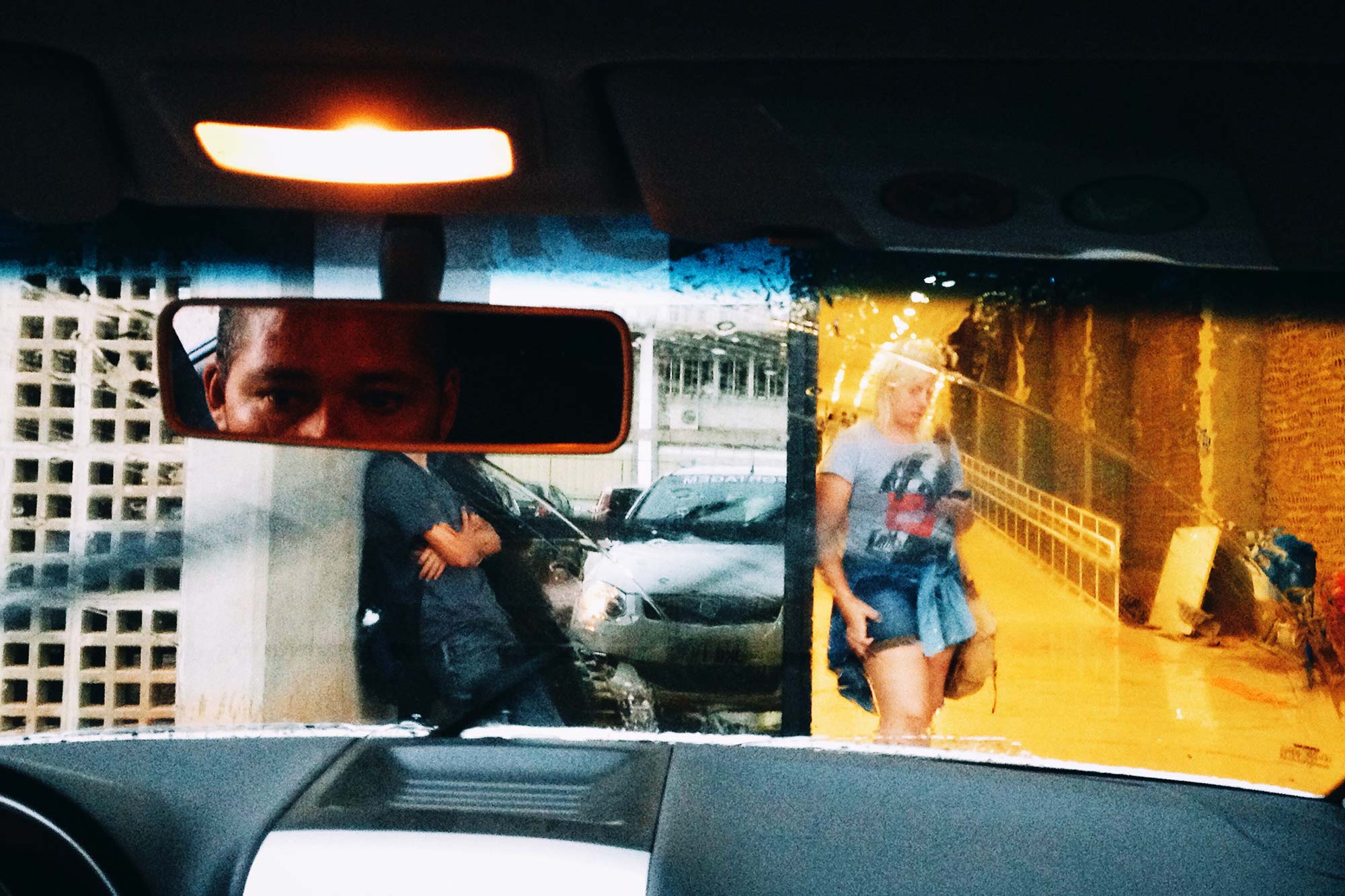INTERVIEW
Wonderful Intimacy and a Delightful Camera Slant
GUSTAVO MINAS
Hi Gustavo. Firstly, congratulations on winning out third theme ‘Street Life’. Your winning image has a wonderful intimacy to it, and a delightful camera slant too. Can you tell us a little more about the image, and how you got it?
This photo was taken on the escalators of Brasília bus station and it’s part of my series ‘Rodoviária’. I’m always going up and down those escalators as it’s one of the last illuminated spots as the sun is setting. It’s a great spot to shoot in, people are always rushing and they don’t pay much attention to the photographer. It had just rained that day, right before the sunset, and the whole place had a golden gleam from the sunbeams reflected on the puddles.
Suddenly I saw this boy immersed in his thoughts, leaning against the handrail as he went up, and my instinct was to tilt the camera so he would be pictured straight. It’s one of those days when luck is on your side, so I also had a second interesting looking character, plenty of diagonal lines and also an image of the sun setting behind the Congress building on that billboard, mirroring the real sun behind me.
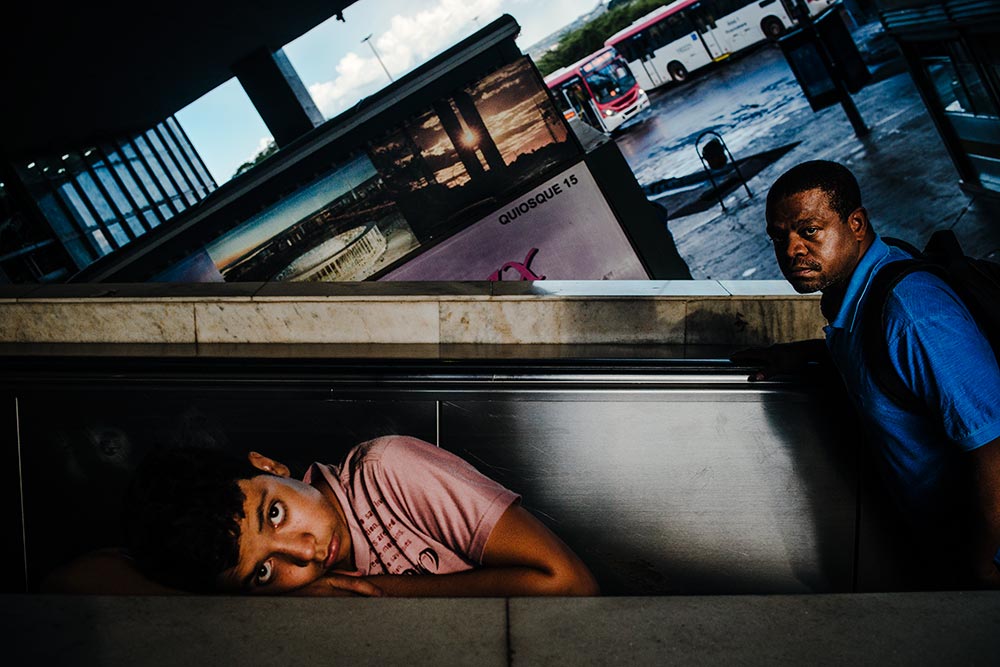

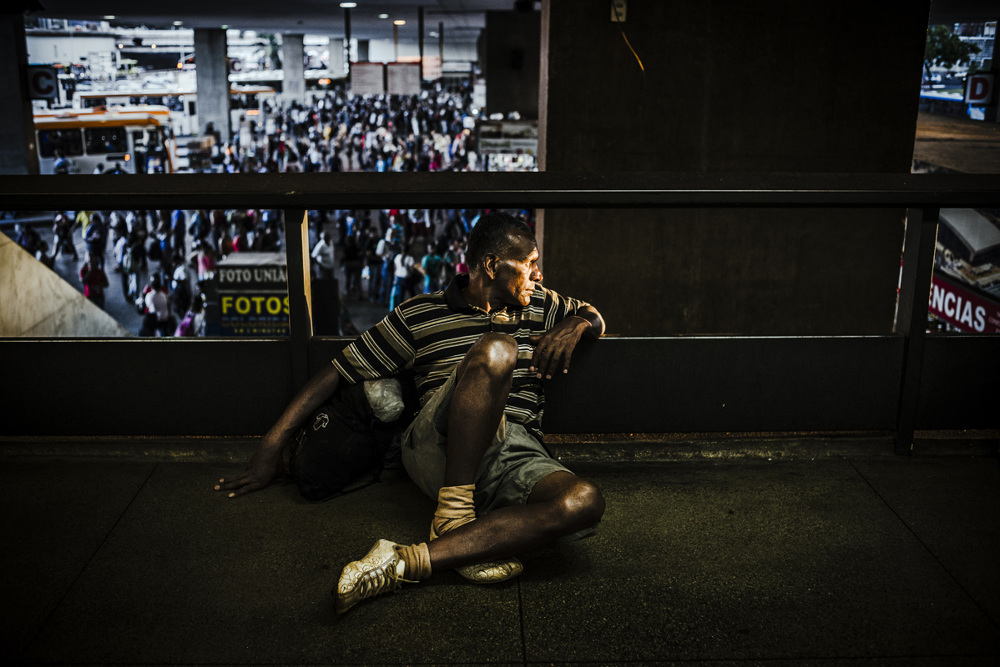
Images from the series ‘Rodoviária’
The image is from the series ‘Rodoviária’, which I believe is a bus network right? Can you tell us a little more about the series?
I moved to Brasília in 2014 and was a bit bored by the city. Its huge, empty open spaces and unwalkable roads; the way people seemed to always be in their cars and never on the sidewalks; its narrowly planned boredom, typical of a city which seems built to segregate. I missed getting lost in the crowd as I used to in São Paulo.
The only place I could find some chaos and energy in was the central transport station – Rodoviária do Plano Piloto – a microcosmos just a couple of kilometers away from National Congress. It’s a place where two worlds mix – people both from the lower class satellite towns and from the affluent blocks within Plano Piloto. It’s also the place where many hopeless outsiders who come to the capital roam, trying to get a job or begging, sleeping under its arcades at night, by themselves or with their families. Basically, this series is an attempt to show the tension between the two faces of the Brazilian capital, to immerse myself more deeply in the flux of the city and to get slightly closer to my fellow citizens in a city always prone to separate.
How did you first get into street photography? What role does it now play in your life?
It was around 2009. I’ve been living in São Paulo for almost two years. I enrolled in a year-long course under Carlos Moreira, a master who’s been photographing São Paulo since the 60’s. All the course was based on photographers who used photography as a medium for self expression, such as Kertész, Robert Frank, Lee Friedlander, Eggleston and Harry Gruyaert (who’s been my main influence)… guys who mostly worked on the streets. And this inspired me to go out to and photograph the streets of my city, something I was still a stranger to. It was a great way to get to know São Paulo.
I became totally addicted to it, not just for the photos I took, but for the experiences I had while wandering around. Photography plays a big role in my life now. It’s a form of meditation, essential for my mental health. I get a bit moody if I can’t go out to shoot for 3 days or so. I totally forget about myself when I’m walking around with a camera, and it feels great. I really hope I can keep doing this forever.
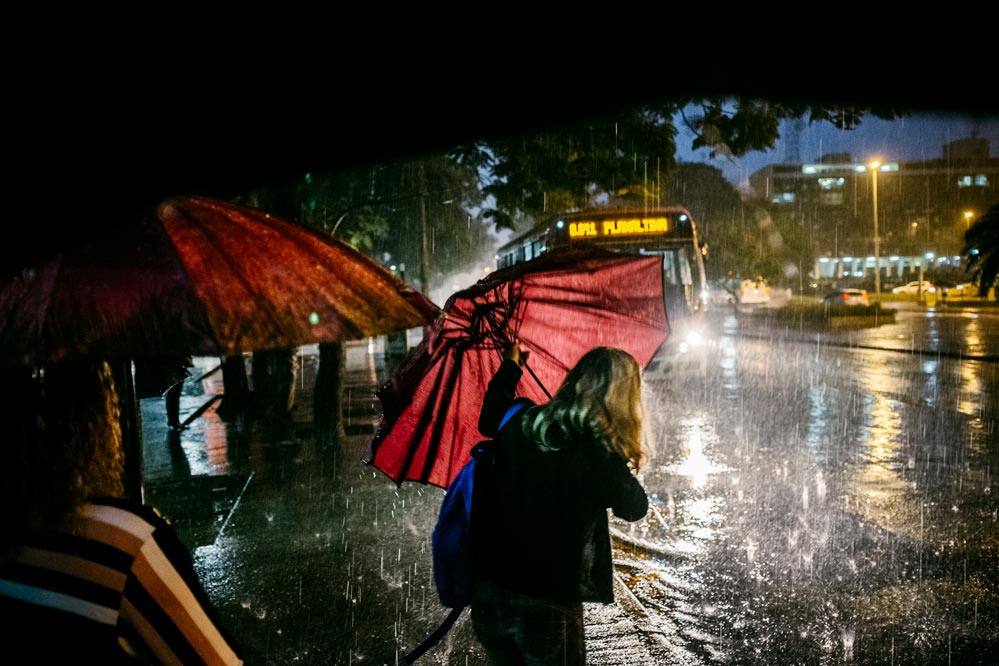
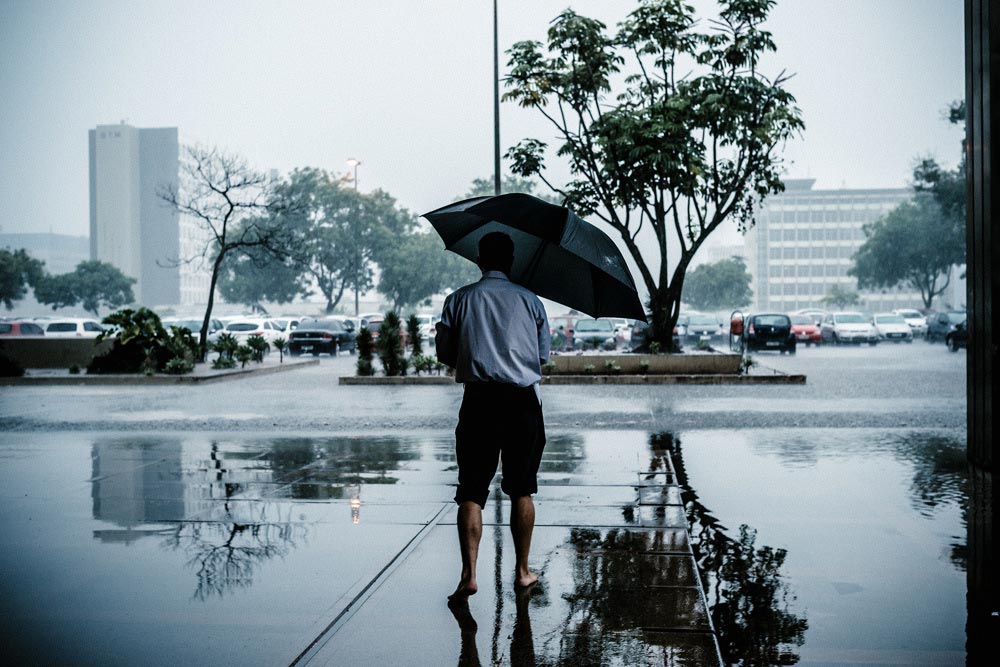
Images from the series ‘O Caso da Chuva de Ontem’
“The greatest gift of photography is being able to never get bored with the world, never be tired of seeing it. There’s always something worth looking at, everywhere, and photography has helped me to realize that”.
I look at your images, and one of the first things that strikes me is your beautiful way with light. Even images from your series ‘O Caso da Chuva de Ontem’ – all of which are taken in the rain – are dripping with gorgeous colours. Can you tell us a little more about your approach to image making? How do you work?
You’re right, my photography is totally light driven. I hardly go out when the sky is cloudy and everything is grey. I don’t know if there’s much I can say about it, I just think that light really can transform everything – the mundane can look extraordinary. A simple example is: red in the shade is a totally different color when exposed to sun. A place at midday is a completely different place at dusk. Edward Hopper says some very insightful things about light in this documentary called ‘Edward Hopper and the Blank Canvas’ which I highly recommend. He says that in some of his paintings he was simply interested in representing light reflected on a surface, and the beauty of it.
Your series ‘O Parto’ is a stunning document of childbirth. Can you tell us a bit more about that work? Is it the first time you’ve stepped away from the street in your image-making, and was that a conscious decision? Do you have plans to do more projects like this?
It wasn’t a conscious decision. But I’m always photographing whatever happens in my life, including my girlfriend Priscila, so it was only natural making portraits of her during pregnancy.
We decided to have Violeta at home, and it was a long 20-hour process, so I registered it too (while helping her with the labor as well, of course). Two months later I looked at the photos and was amazed by the winter light coming through our windows and by the strength of her expressions, so I decided to gather some images and make a project out of it. I have no plans to do more projects like this for now, but I keep on photographing our family.
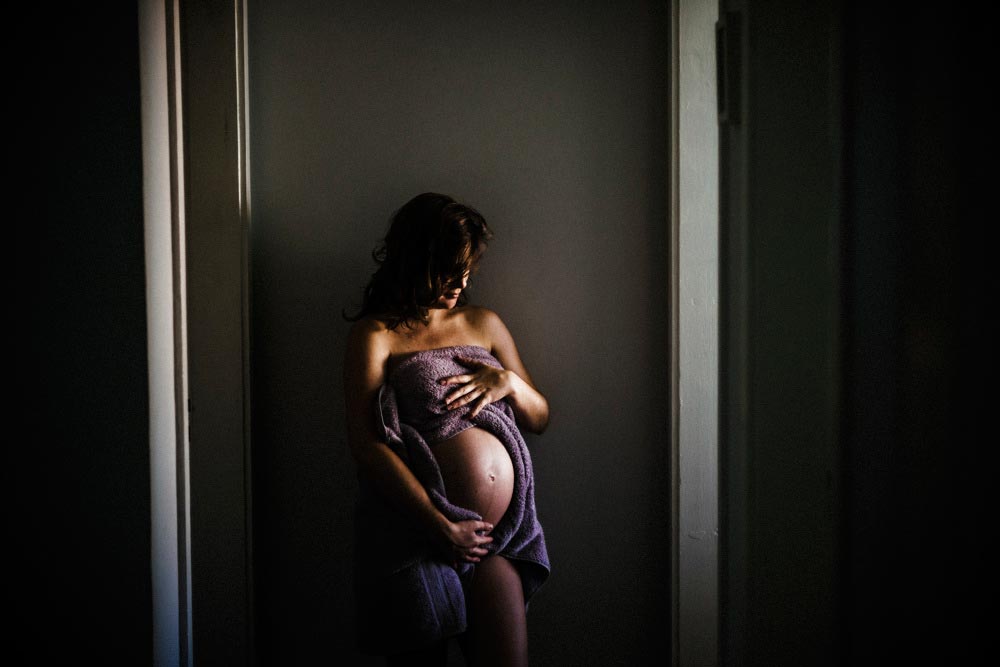
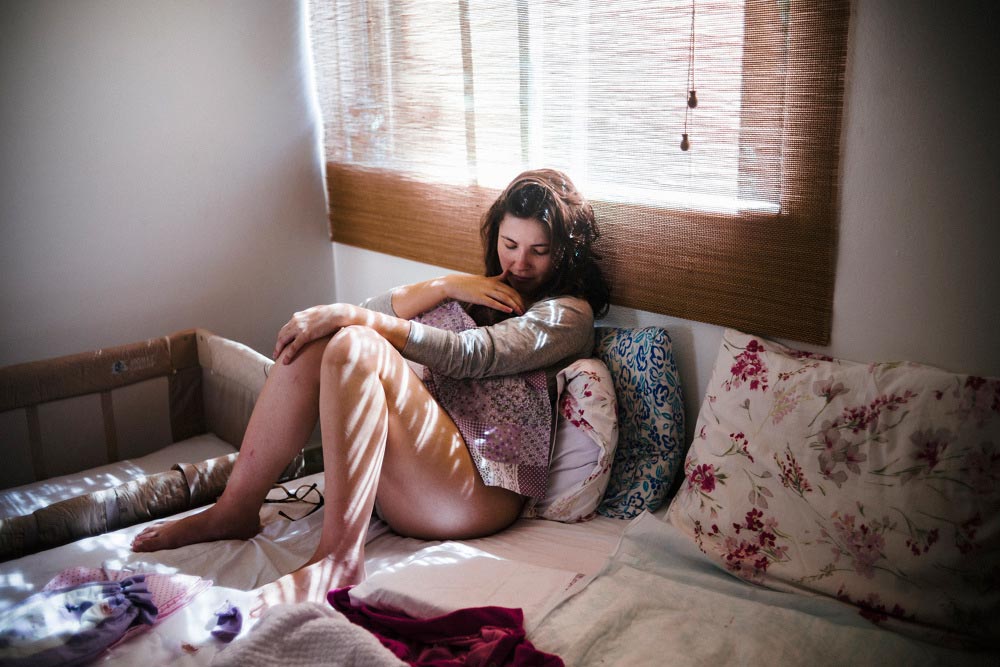
Images from the series ‘O Parto’
You’re a member of various photographic collectives – SelvaSP, Flanares and VIVO. What role does the collective play in your photography? How do you interact with the other members? And do you feel it’s important for photographers to coalesce as a collective in what is usually a solo pursuit?
Street photography can be a very lonely activity, so it’s great having pals to share ideas about it with – virtually or personally. My relationship with my fellows from SelvaSP used to be closer in the first 2 years of the collective. We were together all the time, like a family – but then I moved to Brasília, another member also moved away from São Paulo, and now we’re not that close anymore, physically speaking.
My relationship with my fellows from Vivo and Flanares has been more virtual, though now and then I meet other guys from Flanares and it’s great having some beers and talk almost exclusively about street photography – it’s a very specific subject matter, and it’s not easy to find someone to talk about it to.
I read and interview of yours with Eric Kim where you said: “I tend to think that photos themselves are slightly overrated: in the end of the day, it’s the fun you have and the person you are which counts, as well as the relations you build through photography, the way you interact with the city and its people, the odd experiences you have because you decided to leave home to wander around with a camera”. That’s quite an enlightened view, and one I really respect. Other than that, what’s the greatest lesson photography has taught you?
Learning to see, probably. What I mean is that for me, the greatest gift of photography is being able to never get bored with the world, never be tired of seeing it. There’s always something worth looking at, everywhere, and photography has helped me to realize that.
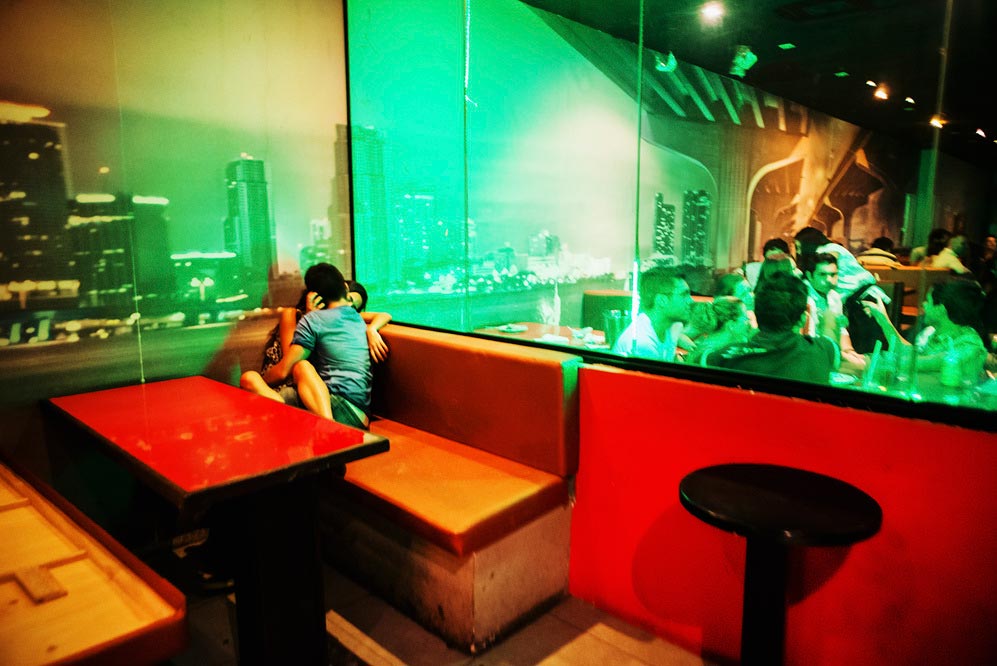

Images from the series ‘São Paulo: 2009-2014’
With the Olympics coming to Brazil this year, all eyes will be on your country. There have also been a lot of protests over the last few months. Has this impacted your work at all?
Well, it’s in Rio and I’m in Brasília, so I don’t think it’ll affect my work at all. 🙂
Is there anything else you’d like to add?
That’s it!
All images © Gustavo Minas
See more of Gustavo’s work here: www.gustavominas.com
